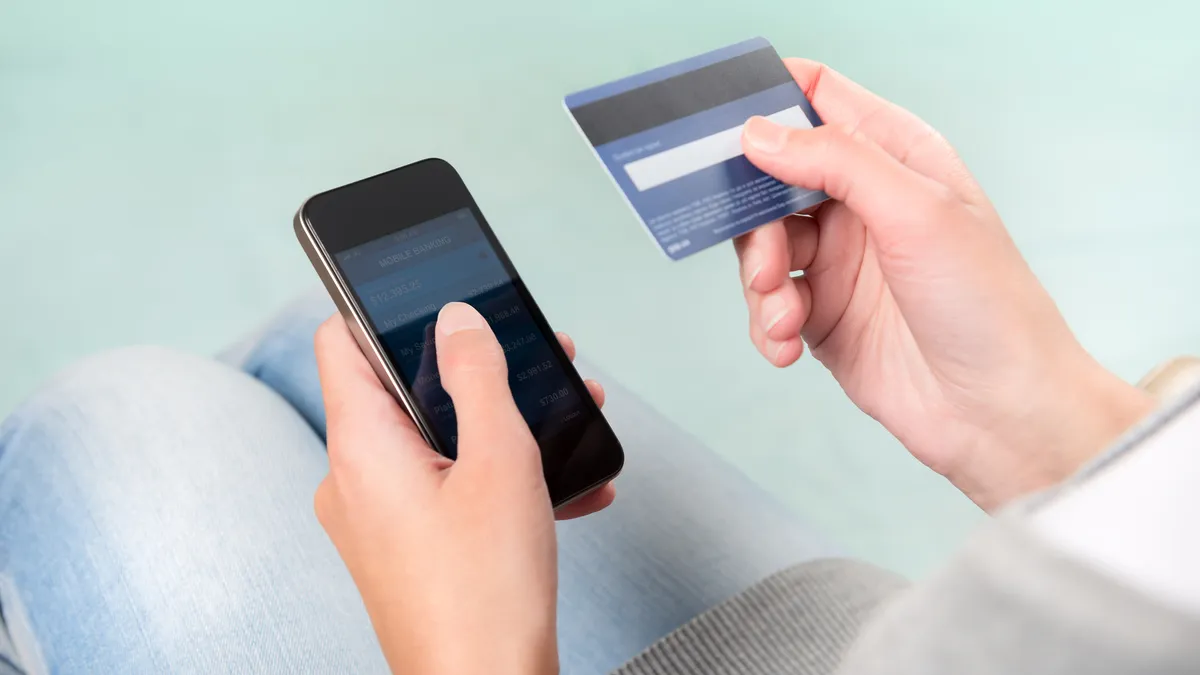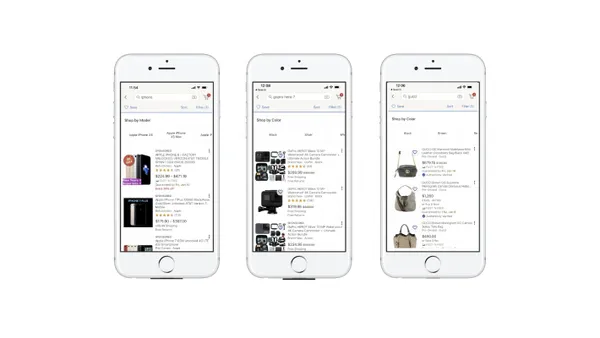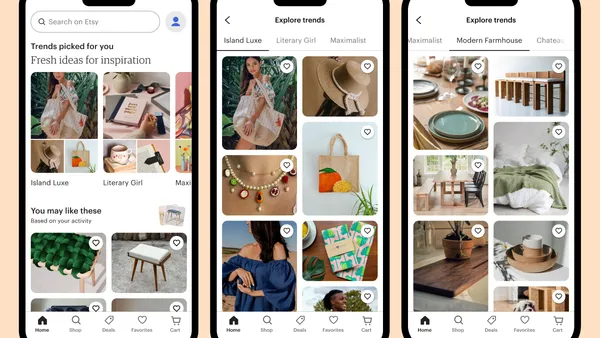Dive Brief:
-
The percentage of online sales made via mobile phone in 2017 was about 36%, representing a 7% decline from 2016, even though e-commerce in general increased about 14% from 2016 to 2017, according to new data from Forrester Research.
-
The data also showed that about 16% of U.S. online adults with mobile phones bought physical goods via mobile at least weekly in 2017, but that figure was down from 21% in 2016.
-
In addition, about 82% of U.S. online adults admit to going online via their laptops or desktops on a daily basis, much higher than the 65% who said they go online daily through their mobile phones. Another 11% of U.S. online adults said they did not even own a mobile phone, up from about 5% in 2016.
Dive Insight:
So, were we wrong about this whole mobile shopping thing? Just about every bit of research and prognostication on this subject, from mobile shopping surveys to holiday season shopping data, has told us that shopping is increasingly going mobile and that an ever-growing percentage of online shopping is happening via mobile phones.
But Forrester’s numbers don’t necessarily mean that mobile shopping is facing any sort of dead end. What they might be showing us is that consumers are not having positive enough mobile shopping experiences to keep them coming back via mobile to shopping apps and websites. For some who have tried, buying online through desktop and non-mobile phone devices, and from non-mobile websites, simply has been the easier, more effective way to shop online.
Forrester hinted at as much, saying that the sector is unlikely ever to see mobile shopping sales represent more than 20% of the total U.S. retail market — a market expected to be worth more than $3.6 trillion in 2018 — without a greater effort by retailers to evolve and change aspects of their mobile shopping experiences.
For example, Forrester suggested that increased adoption of mobile payments by both retailers and shoppers could help. Retailers only control one half of that equation, but they could influence shopper adoption of mobile payment apps by accepting more forms of mobile payment and working more closely with mobile payment enablers to promote the ease of shopping and paying via mobile.
Retailers also have started embrace new mobile features, like augmented reality, that can potentially create a richer, more interesting mobile shopping experience for consumers. However, Forrester's data suggests they might want to put more effort into making mobile shopping fast, easy and reliable, something it seems they still haven't mastered.












